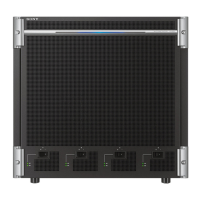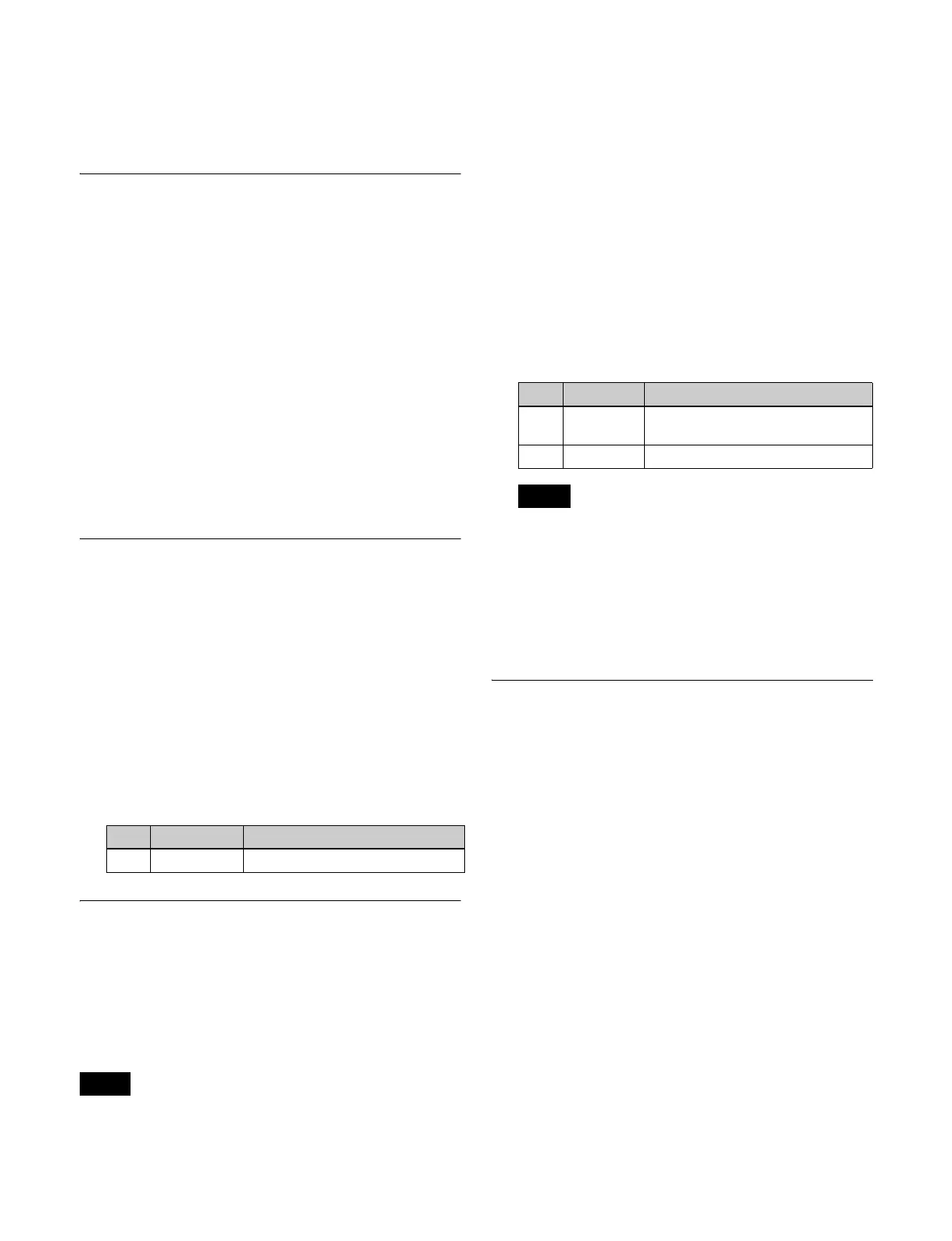252
Fade: The key signal density changes according to depth
information. The video signal does not change.
Key Density: The key signal density changes. The video
signal does not change.
Invert Settings
This effect inverts the input video signal and/or key signal
horizontally or vertically. You can make separate settings
for the front and back.
Applying the Invert effect
1
Open the DME >Input/Output >Video/Key menu
(4162).
2
Select the invert direction in the <Front> group for the
front input signal and in the <Back> group for the back
input signal.
H Invert: Invert video and key signals horizontally.
V Invert: Invert video and key signals vertically.
Key Density Settings
You can adjust the key density for the key signal input to
the DME.
Setting the key density
1
Open the DME >Input/Output >Video/Key menu
(4162).
2
Press [Key Density], turning it on.
3
Set the following parameter.
Key Source Selection
You can select either the key signals received from the
switcher or the key signals generated in the DME for
application to the front and back of the image.
Selecting the key source
When shaped video (see page 251) is enabled, the key
source cannot be selected. It is fixed to [Ext Key].
1
Open the DME >Input/Output >Video/Key menu
(4162).
2
Select the key source in the <Front Key> group for the
front input signal and in the <Back Key> group for the
back input signal.
Ext Key: Use the key signal sent from the switcher as
the key source.
Int Key: Use the full-size DME internal key signal as
the key source.
Lum Key: Use the input video luminance signal as the
key source.
3
When [Ext Key] or [Lum Key] is selected, set the
following parameters.
• [Ext Key] and [Lum Key] in the <Front Key> group
share the [Clip] and [Gain] parameter settings.
Similarly, [Ext Key] and [Lum Key] in the <Back
Key> group share the [Clip] and [Gain] parameter
settings.
• The [Ext Key] parameter setting is only enabled
when the shaped video setting is disabled.
Interpolation Settings
This specifies the methods used for interpolation
processing of input video signals and input key signals.
For input video signals, you can select from the following
four methods.
• Detect changes in the luminance and chrominance
signals separately, and switch automatically between
fields and frames. You can select the degree of change
detection.
• Detect changes in the luminance signal separately, and
switch automatically between fields and frames. You
can select the degree of change detection.
• Do interpolation in field units.
• Do interpolation in frame units.
For input key signals, you can select from the following
three methods.
• Detect changes in the luminance signal separately, and
switch automatically between fields and frames. You
can select the degree of change detection.
• Do interpolation in field units.
• Do interpolation in frame units.
No. Parameter Adjustment
1 Key Density Key density
Note
No. Parameter Adjustment
1 Clip Reference level for key signal
generation
2 Gain Key sensitivity
Notes

